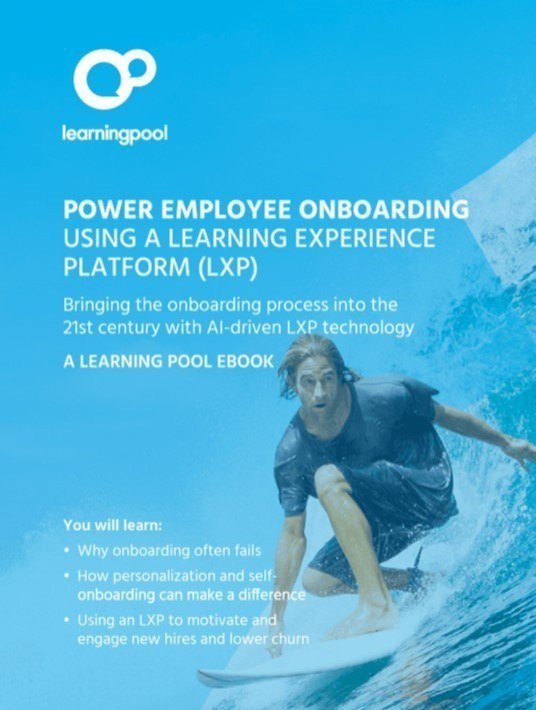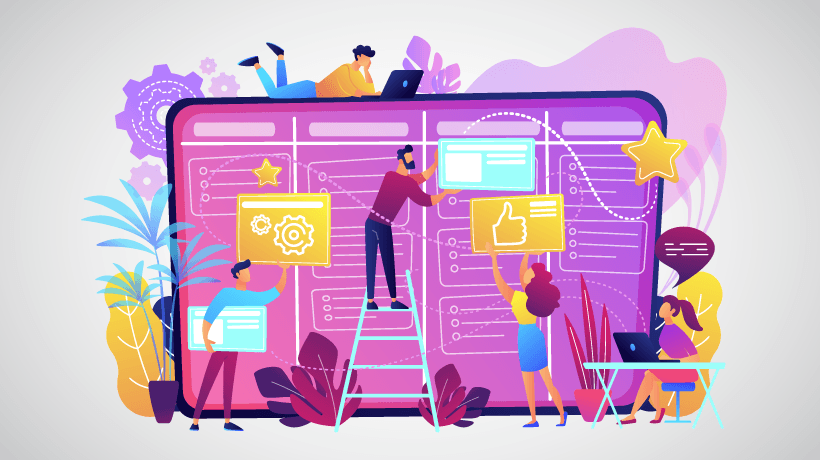How To Maximize Onboarding Training ROI By Investing In An LXP
The key focus of LXPs is on the learner and the learning experience. LXPs make training engaging and give the learner the opportunity to manage his or her learning. As a result, they motivate learners to navigate their own path through training. This is particularly important in an area like onboarding where relevance can seem elusive and where training is often seen as simply procedural (checking the boxes) rather than vital to new employees’ integration into the organisation’s work and culture.

Also, by investing in an LXP you signal a change in the way your organisation regards onboarding. With an LXP onboarding becomes a continuous process rather than a series of discrete, staged events. The ease of access to information and learning content means new employees can take charge of their own onboarding, making it more personal and relevant to their needs and taking account of where they are in terms of previous experience. In its configuration and design too, an LXP can better reflect the organisation’s structure and culture than the traditional classroom or LMS-based onboarding training.
The AI Element When Using An LXP For Onboarding Training
LXPs make extensive use of AI to offer a variety of features that enhance the learning experience. One vital tool in the LXP’s kit-box is recommender systems. These work in a similar way in an LXP as they do on our favourite media apps. Recommender systems use searches and previous behaviours to build a profile of learners which they can then serve. From a learning point of view, recommendations can be used to create learning pathways that are unique to individual learners.
The advantage of such systems from a new employees’ perspective is that they can select or be recommended the onboarding information they need as they need it. It’s a more subtle, nuanced and efficient way of communicating vital information and avoids the top-down, content-heavy approach of overwhelming new hires with mountains of material when they’ve barely got a foot in the door.
Instead, recommender systems allow learners to pull information when they need it. But they can also be used to push information and updates to learners using AI-based notifications. These reminders and calls to action can be programmed to take effect as a learner completes a milestone or equally if a learner has been inactive and not accessed training content. Milestones can be recognised through a badging system to reward progress. The adoption of a microlearning approach to content supports this use of recommendations and notifications.
One other important AI-based element in LXPs is the potential to embed an AI-powered chatbot. A chatbot can guide new hires, responding to onboarding queries and assisting employees in navigating through the various phases of onboarding. A chatbot extends the LXP user’s ability to locate and interrogate information beyond that of even a powerful search engine (another useful LXP feature) by creating a dialogue between the user and the system. Responding to learner interactions chatbots can offer recommendations and nudge learners in the right direction while making learning more relevant and personal to the individual.
Maximising Onboarding Training ROI With AI
Let’s consider more closely the way in which an AI-enhanced LXP can help maximise ROI in key areas of onboarding training.
1. Freeing Up Resources And Time
Using AI to guide your new hires to the right resources at the right time makes onboarding more efficient. Learners find out what they need to know as they need to know. If they forget it or try to skip a stage, the system will notify them.
For HR and L&D having an always-on onboarding resource gives them the assurance that onboarding can be a continuous process, not tied to a single event or bundle of information. So, rather than coral learners into training sessions that are limited by time and space, you can allow them to self-onboard over a period of time as they’re beginning to take up their new roles.
2. Targeted Onboarding
AI-powered features mean you can better target information at learners. And they can exercise choices and options that allow them to access training in a way that’s more meaningful to them. This differentiation moves training away from a generic approach towards personalisation of learning. Personalisation, in turn, delivers greater learner engagement and control and promotes individual responsibility. These are vital in an area like onboarding where your aim is to protect your investment in individual talent. It demonstrates your belief in your new hires, too, as well as helping promote your investment.
3. Fast-Track Onboarding
Access to an always-on, always-accessible LXP allows you to speed up onboarding training or at least make it run alongside work. Remember that onboarding training is designed to allow the new hire to integrate into a new working environment. Traditional onboarding often seems to signal the opposite intent. It is taking employees out of work or putting barriers in their way of taking up their new roles. With LXPs available on mobile devices, their familiar and intuitive interfaces, and their AI-powered support features, you can allow your new hires to learn while they take up their new jobs. Onboarding training then truly becomes part of the process of getting onboard as it moves into the workflow. You get your new hires into work quicker and better prepared.
4. Reuse And Repurpose
A microlearning approach supports AI features best. This means delivering content in quick and easily digestible chunks. In terms of training design and investment, this offers a greater return on content creation.
LXPs accommodate content in a wide variety of content which means you can easily re-use, re-purpose and amend your existing content to deliver greater impact. LXPs also allow for the creation and curation of user-generated content which opens up the prospect of peer-to-peer training. In the context of onboarding, this can mean enabling experienced employees to provide tips and advice specifically aimed at new hires helping them adjust to their new roles.
Microlearning is a more agile, relevant and targeted way of delivering onboarding training. Easily update and adapt resources. Add new material quickly to fill any information gaps.
5. Working With Better Data
LXPs not only have the potential to make recommendations based on user choices and interactions, but they can also collect and report back data taken from those interactions. This granular-level data can then be served up in a series of generic or customised reports and the information graphically represented on dashboards.
The data-rich feedback clearly illustrates what’s working and what isn’t and allows HR to identify any gaps in the provision and take-up on onboarding training. Make interventions using the notification systems and by creating or repurposing content in a microlearning format. It helps raise the standard and relevance of onboarding training by anchoring it on the hard, data-backed evidence of learner engagement and performance. Data and user feedback are vital for better assessing your onboarding training ROI.
Economies And The Value Add
Using an AI-powered LXP can result in savings in time and effort for new hires and HR. The provision, administration, and take-up of onboarding training are all greatly enhanced. Onboarding becomes a more personal and relevant experience. It frees new hires and HR to do more important work in onboarding. And, ultimately helps save on churn.
But onboarding training ROI is not all about economies; it’s about adding value too. A rewarding, engaging onboarding process will help secure your investment in new talent. New hires will better understand where they stand in the new organisation and be able to enter the workplace and demonstrate their skills more quickly and efficiently. You’ll see real gains in better and faster onboarding that translates into better adjusted more productive new hires who start to contribute quicker. The true ROI for the organisation is to improve employee efficiency and performance and assist new hires be more productive faster. AI-driven LXPs have a real role to play in achieving that goal. Download the eBook Power Employee Onboarding Using A Learning Experience Platform (LXP) to discover more about the topic, and join the webinar for supplementary insights.
Sources:
The HT2 Labs Guide To Learning Experience Platforms
Are you experienced? An insight into Learning Experience Platforms
The Learning Experience Platform (LXP) Market Expands









